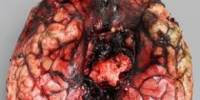Dissociative identity disorder (DID) is a mental illness. DID patients have multiple, distinct personalities. It is a mental disorder characterized by the maintenance of at least two distinct and relatively enduring personality states. It was previously known as multiple personality disorder (MPD) and colloquially known as split personality disorder. At different times, a person’s behavior is controlled by their various identities. Memory gaps that are not explained by ordinary memory problems accompany the disorder. Memory loss, delusions, and depression can all result from the condition. DID is usually caused by a traumatic event in the past. The personality states alternately manifest in a person’s behavior; however, the disorder’s presentations vary.
DID can cause memory gaps and other issues. Post-traumatic stress disorder, personality disorders (especially borderline and avoidant), depression, substance use disorders, conversion disorder, somatic symptom disorder, eating disorders, obsessive-compulsive disorder, and sleep disorders are all common in people with DID. Self-harm, non-epileptic seizures, flashbacks with amnesia for flashback content, anxiety disorders, and suicidality are all common. People with DID can benefit from various types of psychotherapy.
DID is linked to traumatic childhood experiences or abuse. In approximately 90% of cases, there is a history of childhood neglect or abuse, while other cases are linked to wartime experiences or medical procedures during childhood. Genetic and biological factors are thought to play a role as well. If the person’s condition is better explained by a substance use disorder, seizures, other mental health problems, imaginative play in children, or religious practices, the diagnosis should not be made.
According to research, the cause of DID is most likely a psychological reaction to interpersonal and environmental stresses, particularly during the early childhood years when emotional neglect or abuse can interfere with personality development.
In most cases, treatment consists of both supportive care and psychotherapy. Without treatment, the condition usually worsens. It is estimated to affect 1.5% of the general population (based on a small US community sample) and 3% of those admitted to hospitals in Europe and North America with mental health issues. DID is diagnosed six times more frequently in women than in men. In the latter half of the twentieth century, the number of recorded cases increased significantly, as did the number of identities reported by those affected.
Dissociative identity disorder is defined by the presence of two or more distinct or split identities or personality states that have constant control over the person’s behavior. Dissociative identity disorder is characterized by an inability to recall key personal information that is too extensive to be explained by simple forgetfulness. There are also highly distinct memory variations that may fluctuate with dissociative identity disorder.
DID is a contentious issue in both the field of psychiatry and the legal system. It has only been used in court once to argue criminal insanity. It is unclear whether increased rates of the disorder are due to increased recognition or sociocultural factors such as mass media portrayals. The typical presenting symptoms in different parts of the world may also differ depending on culture, for example, alter identities taking the form of possessing spirits, deities, ghosts, or mythical figures in cultures where normative possession states are common. The possession form of dissociative identity disorder is involuntary and distressing, and it occurs in a way that violates cultural or religious norms.
















